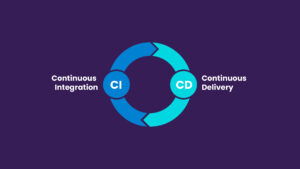Analysis of a New Healthcare Software Product
December 12, 2015
At Augment, our main wheelhouse is software development, but another service we provide is helping people or companies get their technology into a real-life usable form. We love driving the process of getting from research to application. This post is on how we would approach taking an innovative health data analysis technology and turning it into a product. We’ll talk about several different aspects of the process, what questions we would ask and how we would help.For an example we’ll use an interesting technology in the healthcare space from the University of Michigan.
They have a predictive analytics method to better forecast who with Hepatitis C will develop chronic liver disease. That sounds useful to me.
So let’s pretend the researcher came to us interested in commercializing this technology, turning it into a marketable product. There are a lot of steps involved for taking a technology to the market. Although it’s a major part of commercialization, in this post we will not address the marketing and sales component.
Background on Technology:
What data inputs are needed for this chronic liver disease model? How do you get access to these inputs? It’s possible that some of the needed inputs may be confidential. That is fine. We do not need to know the exact details. But I am guessing the weightings are more confidential than the actual inputs like age, sex, income, history of alcohol, blood tests, glucose levels. I am just guessing these could be some of the inputs.
What algorithms are used to predict incidence of Hepatitis C? Is it a combination of several or a custom made one? We do not need to know the details for IP reasons, but it is helpful to understand how this works.
How long does it take to gather the input data and run the analysis? Are there issues with standardizing the data?
Do you have published papers on this technology?
Do you have IP protection, international and domestic?
What do clinicians use now to understand the potential for chronic liver disease?
What’s the value created by this? Is it obvious, measurable? How much would customers pay for something like this?
Previous Clinical Trials:
Have you done clinical studies? Who was the PI? How much did it cost per person to run the trial? Where did the funding come from? This helps give us a sense of the cost of future studies. It can also help us understand how connect the PI is who did the study.
What was the size of the trial?
What were the false negatives/positives for the studies?
What was the make-up of the participants? Sex, age, ethnicity? Does the algorithm work across all of these levels? Does it work better in one group over the other?
Regulatory:
What’s the regulatory pathway for a product like this? This is a difficult question to answer early-on. If they know the answer, then they have thought through the entire process. Understanding the regulatory pathway can take a lot of time and money.
Do you have an FDA strategist?
Have you talked to the FDA? What did they say?
Software product design:
What features are crucial for phase 1, 2 and 3?
Who will use the product? Will it be used by clinicians, nurses, analytic professionals? This answer will help to determine the design and complexity of the product. If it will only be used by analytic professions who are familiar with analytic packages and programming, then the product can include more ways to customize and be a little more crude overall. If it will be used by doctors, then it has to be very user friendly and clear. And provide less options for customizations.
What do you want the product to tell the user? What is the end point? Does it give a range of probabilities? Or just say Yes or No?
What administration controls will be necessary? What can the administrator, often the user, change? Can they tweak the algorithm? They should be able to update the patient profile.
Go to market strategy:
Who could be potential distribution partners? These partners could also help fund the development.
Team/Partners:
How would you find a potential partner and how will this technology help them? Could they make or save money? Or could it help them sell an existing product they sell? Maybe a Pharma company that sells a Hepatitis C drug could use this as a tool to show that their drug is needed. A partner could also be a firm that wants to get into this area. That would be harder to find because you have to know someone is wanting to dive into the Hepatitis C area. Unless you have inside knowledge you would have to get lucky finding someone. Would the Hepatitis C association know of anyone who could be interested? Or would they be interested? Typically associations do not invest in for profit companies but some do.
In the future we will take a deeper dive into each of these areas. There are many follow-on questions for each of those listed here. If a client needs help with this process we would love to be a part of it. And of course we would always be available for the software component as well.
Related posts

Curious about CI/CD… what it means and why you should care about it?
Augment’s got you covered! You may have heard the term “CI/CD” thrown around in software development discussions and internal meetings, but it’s not frequently discussed as to “why” it matters. CI/CD stands for Continuous Integration and Continuous Delivery (or Deployment, depending on the team). It is a set of practices that helps teams deliver code …

Introducing Auggy AI: A Conversational AI Assistant
Embracing AI sounds easy but it’s often hard to know what and how to implement AI. To that end, we built an internal custom AI assistant. Our AI assistant Auggy is built to respond accurately to questions regarding our internal policies, manage project tasks, and provide updates on JIRA, to create, and view events, allowing …

Why AI
Why are we excited about AI? There is definitely a lot of hype around AI. The hype is exciting but also deafening sometimes. Everyone feels the pressure to build and engage with AI. It’s magical, life changing. That’s kind of all true. But there is a lot of work to be done to achieve that …

